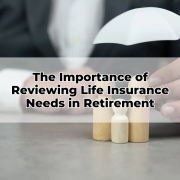The Benefits of Life Insurance Riders
Table of Contents
ToggleLife insurance is a fundamental aspect of financial planning, providing a safety net for your loved ones in times of need. But did you know that you can enhance your life insurance policy with riders? Life insurance riders offer additional coverage and customisation, ensuring your policy meets your unique needs and circumstances. Understanding the benefits of these riders can help you create a more comprehensive and tailored life insurance plan.
What Are Life Insurance Riders?
Life insurance riders are supplementary benefits that can be added to a standard life insurance policy. These riders enhance the basic policy by providing additional coverage or special benefits. They are designed to address specific needs that may not be covered by the standard policy, allowing policyholders to customise their life insurance to better suit their personal and family needs.
Common Types of Life Insurance Riders
There are several types of life insurance riders available in Australia, each offering unique benefits. Understanding these common riders can help you choose the right ones for your policy.
Accidental Death Benefit Rider
The accidental death benefit rider provides an additional payout if the insured dies as a result of an accident. This rider is particularly beneficial for individuals with high-risk occupations or hobbies. It offers extra financial security for families, ensuring they receive a higher benefit in the unfortunate event of an accidental death.
Critical Illness Rider
A critical illness rider covers major illnesses such as cancer, heart attack, or stroke. If diagnosed with a covered illness, the policyholder receives a lump-sum payment. This financial support can be crucial during treatment and recovery, helping to cover medical expenses, lost income, and other related costs.
Total and Permanent Disability (TPD) Rider
The TPD rider provides coverage if the insured becomes totally and permanently disabled. This rider ensures long-term financial stability by offering a lump-sum payment, which can be used to cover living expenses, medical costs, and modifications to the home or lifestyle required due to the disability.
Waiver of Premium Rider
With a waiver of premium rider, the policyholder’s premiums are waived if they become disabled and unable to work. This rider maintains the policy coverage without imposing a financial burden during periods of disability, ensuring that the policy remains in force even when the insured is facing financial difficulties.
Family Income Benefit Rider
The family income benefit rider provides a continuous income stream to the insured’s dependents if the insured passes away. Instead of a lump-sum payment, this rider ensures that the family receives a regular income, simplifying financial planning and helping to cover day-to-day expenses.
Advantages of Customising Life Insurance with Riders
Adding riders to your life insurance policy offers several advantages. Riders provide flexibility, allowing you to tailor your coverage to meet your specific needs. They are also a cost-effective way to enhance your policy, often providing additional benefits at a lower cost compared to purchasing separate policies for each need.
Considerations When Choosing Riders
When selecting life insurance riders, it’s important to assess your personal and family needs. Consider factors such as your occupation, health, financial obligations, and the potential impact of unforeseen events. Evaluate the cost of each rider versus the benefits it provides, and consult with a financial adviser to ensure you make informed decisions that align with your long-term financial goals.
Real-Life Examples and Case Studies
Real-life examples and case studies illustrate the significant impact that life insurance riders can have. For instance, a policyholder with a critical illness rider may receive a lump-sum payment that helps cover the cost of treatment and recovery, reducing financial stress during a challenging time. Similarly, a family income benefit rider can ensure that a family continues to receive a regular income, maintaining their standard of living even after the primary breadwinner’s death.
Waiver of Premium Benefit: A Lifeline During Extended Disability
Consider a policyholder who has an income protection policy costing $300 per month, with premiums increasing at 7% per year. This individual becomes disabled and unable to work, triggering the waiver of premium rider. Over the course of a 10-year disability period, this benefit can provide substantial financial relief.
Let’s break down the numbers:
- Year 1: $300 per month
- Year 2: $321 per month ($300 + 7%)
- Year 3: $343.47 per month ($321 + 7%)
- Year 4: $367.51 per month ($343.47 + 7%)
- Year 5: $393.23 per month ($367.51 + 7%)
- Year 6: $420.75 per month ($393.23 + 7%)
- Year 7: $450.20 per month ($420.75 + 7%)
- Year 8: $481.71 per month ($450.20 + 7%)
- Year 9: $515.43 per month ($481.71 + 7%)
- Year 10: $551.52 per month ($515.43 + 7%)
Over ten years, the total premiums waived amount to a significant sum:
- Year 1: $300 x 12 = $3,600
- Year 2: $321 x 12 = $3,852
- Year 3: $343.47 x 12 = $4,121.64
- Year 4: $367.51 x 12 = $4,410.12
- Year 5: $393.23 x 12 = $4,718.76
- Year 6: $420.75 x 12 = $5,049
- Year 7: $450.20 x 12 = $5,402.40
- Year 8: $481.71 x 12 = $5,780.52
- Year 9: $515.43 x 12 = $6,185.16
- Year 10: $551.52 x 12 = $6,618.24
Total waived premiums over 10 years: $49,737.84
This example demonstrates how the waiver of premium benefit can save nearly $50,000 in premium payments over a decade, allowing the policyholder to maintain coverage without financial strain during an extended period of disability.
The Enhanced Security of TPD Insurance
Total and Permanent Disability (TPD) insurance provides an added layer of security that goes beyond what standard life insurance offers. While life insurance only pays out upon death, TPD insurance provides a lump sum if the insured becomes totally and permanently disabled, ensuring long-term financial stability.
Consider a high-quality life policy that not only offers a lump-sum payment but also includes an income protection for a specified period. For example, if a policyholder is insured for $500,000 TPD and also receives an additional income benefit of $5,000 per month for five years, the financial impact is profound.
Upon becoming totally and permanently disabled, the policyholder would receive:
- Lump Sum Payment: $500,000
- Monthly Income: $5,000
- Total Additional Income Over Five Years: $5,000 x 12 months x 5 years = $300,000
Combining these benefits, the policyholder secures $800,000 over the five-year period, providing robust financial support to cover medical expenses, rehabilitation costs, home modifications, and everyday living expenses. This level of comprehensive coverage ensures that the policyholder and their family are well-supported, preserving their quality of life despite the disability.
These examples highlight the critical role that life insurance riders can play in enhancing financial security. By understanding and utilising these riders, policyholders can tailor their insurance coverage to better meet their unique needs and safeguard their financial future.
Conclusion
Life insurance riders offer valuable enhancements to standard policies, providing additional coverage and financial security tailored to your unique needs. By understanding the various types of riders and their benefits, you can create a more comprehensive and effective life insurance plan. Make informed decisions and consult with a financial adviser to ensure that your policy offers the best possible protection for you and your loved ones.









